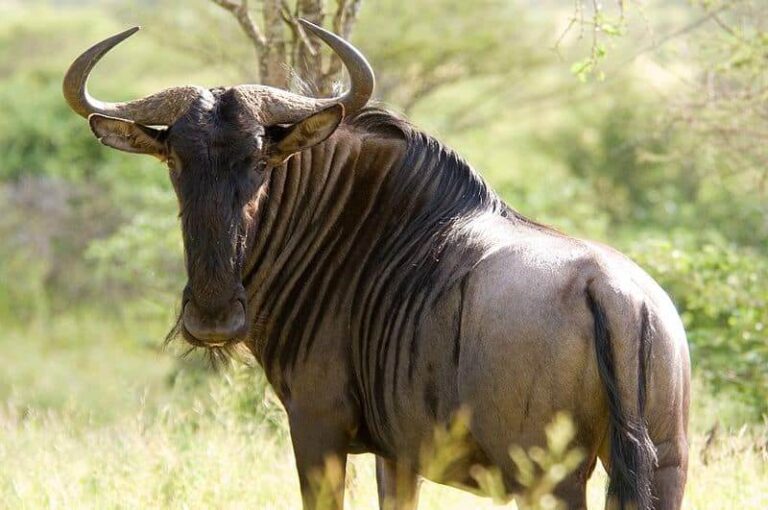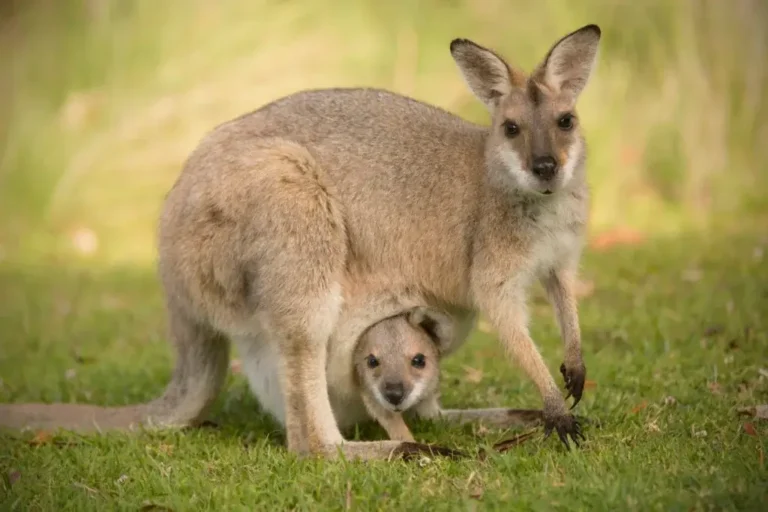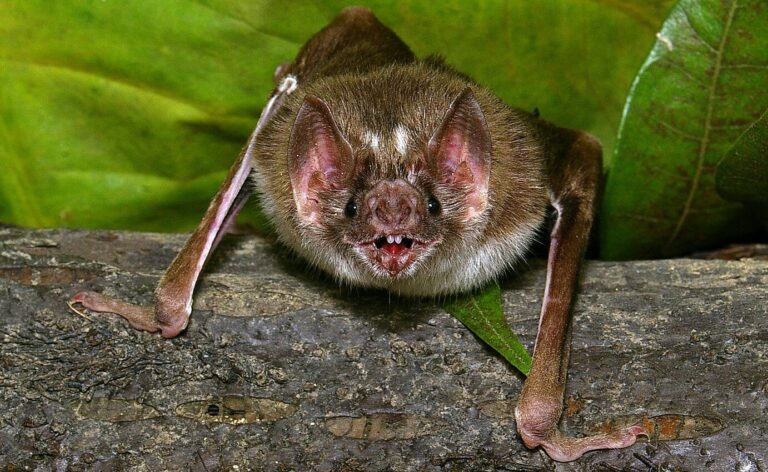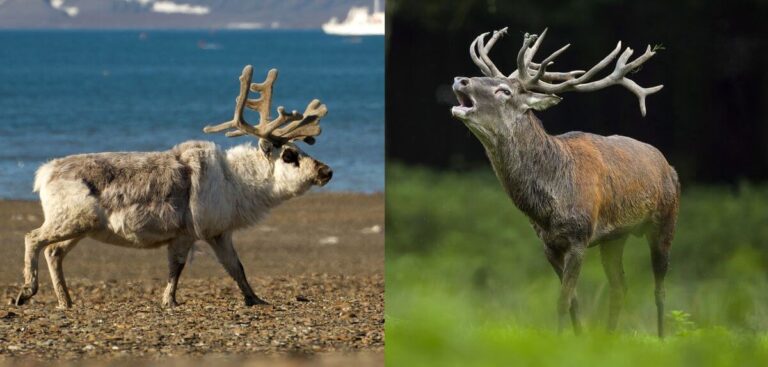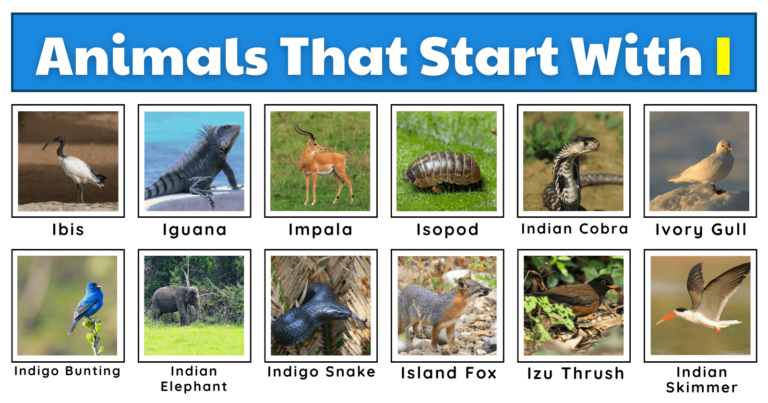Warthog – The Tough African Grazer
The warthog (Phacochoerus africanus) is one of Africa’s most resilient animals, known for its ability to thrive in harsh environments and unique appearance, combining toughness with surprising adaptability. Let’s explore the fascinating details of this wild grazer, from its scientific classification to its interactions with humans.
Contents
Scientific Classification
- Kingdom: Animalia
- Phylum: Chordata
- Class: Mammalia
- Order: Artiodactyla
- Family: Suidae
- Genus: Phacochoerus
- Species: Phacochoerus africanus
Warthogs belong to the same family as domestic pigs, sharing many traits with their suid relatives and exhibiting distinct characteristics suited for survival in the African savannah.
Physical Characteristics

Warthogs have a distinctive appearance, characterized by their large heads, prominent tusks, and tough, coarse skin.
- Size: Adult warthogs stand around 25–30 inches (63–75 cm) at the shoulder and weigh between 120 and 250 pounds (54–113 kg), with males typically being larger than females.
- Tusks: Both males and females have tusks, with the upper pair curving outward and upward. These tusks serve as a defence mechanism against predators and are used in combat between males. The upper tusks can grow up to 24 inches (61 cm).
- Mane and Bristles: Warthogs have a short, sparse mane running down their spine, accompanied by bristly hair on their bodies. Their tail, which stands erect when they run, is another recognizable feature.
- Facial Warts: Their name originates from the large, wart-like growths on their faces, particularly on the cheeks. These warts are thick skin pads that protect their face during fights.
Habitat
Warthogs inhabit a wide range of environments across sub-Saharan Africa, including:
- Savannas
- Grasslands
- Open woodlands
- Scrublands
They prefer sparse vegetation where they can graze easily and access water holes. Warthogs often take shelter in abandoned burrows dug by aardvarks or other animals, which they use to escape predators and extreme temperatures.
Behavior
Despite their somewhat intimidating appearance, warthogs are generally non-aggressive and prefer flight over fight. They exhibit several interesting behavioral traits:
- Burrow Use: Warthogs sleep in caves to avoid predators and extreme weather. Interestingly, they back into the burrow, ensuring their tusks face outward, protecting from intruders.
- Grazing: Warthogs are grazers and spend most of their day feeding. They kneel on their front knees while grazing, a unique behavior that allows them to access short grasses.
- Social Structure: Females (sows) and their offspring live in groups called sounders, typically of up to 6–10 members. Males are more solitary but may join a group of females during mating season.
- Communication: Warthogs communicate through grunts, growls, and snorts, which help them maintain group cohesion and alert others to danger.
Diet
Warthogs are omnivores, though their diet is predominantly herbivorous. They primarily feed on:
- Grasses
- Roots and Tubers
- Fruits
- Bark
Warthogs may dig for underground roots and bulbs during drought or food scarcity using their powerful snouts and tusks. Occasionally, they eat small animals, insects, and carrion, making them opportunistic feeders.
Reproduction
Warthogs have a defined breeding season, typically during the rainy season when food is abundant. Key aspects of their reproductive cycle include:
- Mating: Males fight for access to females, using their tusks to challenge rivals. After mating, the female’s gestation period lasts about 5–6 months.
- Birth: Warthogs give birth to 2–8 piglets, usually in a secluded burrow for safety. Piglets stay in the burrow for the first few weeks of life, with the mother fiercely protecting them from predators.
- Weaning and Independence: Piglets are weaned at about 3–4 months of age and typically stay with the mother until they are about 6–8 months old. Females may remain in their mother’s group, while males eventually leave to live independently.
Predators
Warthogs have several natural predators, including:
- Lions
- Leopards
- Hyenas
- Crocodiles
Young piglets are especially vulnerable and are often targeted by predators such as eagles and jackals. However, adult warthogs can defend themselves with their sharp tusks and are known to run up to 30 miles per hour (48 km/h) when threatened.
Conservation Status
The warthog is listed as Least Concern by the International Union for Conservation of Nature (IUCN). Their population is stable, and they are widespread across their native range. However, habitat destruction and poaching in some areas pose localized threats. Warthogs are often hunted for their meat and tusks, though they are not currently facing extinction.
Interesting Facts
- Warthogs are highly adaptable to drought conditions and can survive without water for extended periods by feeding on moisture-rich plants.
- Despite their rugged appearance, warthogs are surprisingly agile and can jump over obstacles when fleeing predators.
- They engage in mud wallowing, which helps regulate body temperature and protects against parasites and sunburn.
Evolutionary History
Warthogs are part of the suid family, including domestic pigs, boars, and bushpigs. Their ancestors likely evolved around 40 million years ago in Eurasia and later migrated to Africa. The genus Phacochoerus appeared in Africa around 5 million years ago, adapting to the open savannas and developing traits that helped them thrive in these environments, such as their tusks and burrowing behavior.
Relationship with Humans
Warthogs have a relatively neutral relationship with humans. They are not typically viewed as pests, though they may occasionally raid crops in agricultural areas. In many parts of Africa, warthogs are hunted for bushmeat, and their tusks are sometimes used in traditional crafts. In some cultures, warthogs are revered for their strength and resilience.
In wildlife tourism, warthogs are a common sight on African safaris, where they are admired for their quirky behaviour and appearance. Conservation efforts, such as habitat protection, also benefit warthogs, ensuring their population remains stable.
Conclusion
The warthog is a remarkable example of adaptation and survival in the wild. With their distinctive appearance, fascinating behavior, and resilience to the challenges of the African landscape, they continue to thrive in various habitats. As prey and opportunistic feeders, they play a crucial role in their ecosystem. While they face localized threats, their conservation status remains secure, making them a robust symbol of African wildlife.
- Are Rottweilers Good With Kids? Reasons & Training Tips - 17 September 2025
- How Long Are Dogs Pregnant: Complete Guide - 16 September 2025
- German Shepherd Doberman Mix: Info, Pictures, Care & More - 11 September 2025


